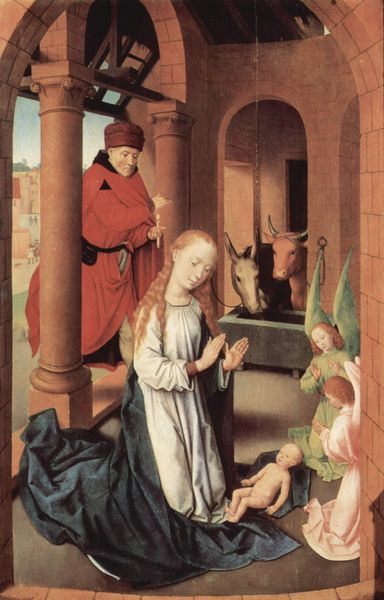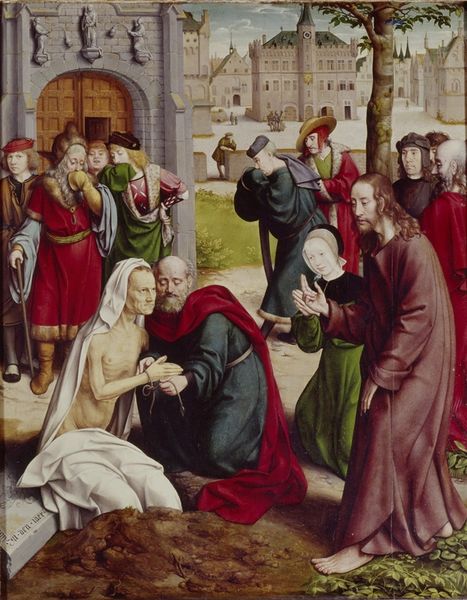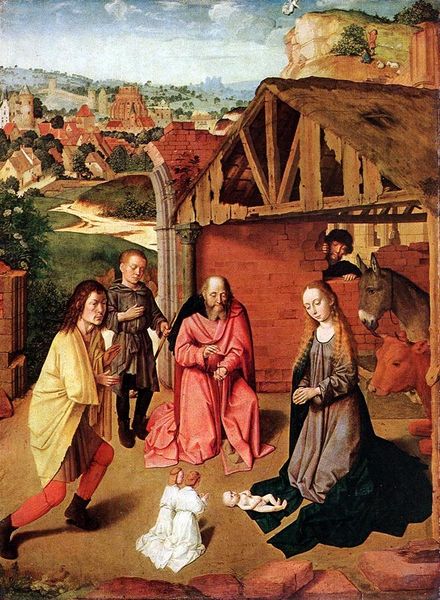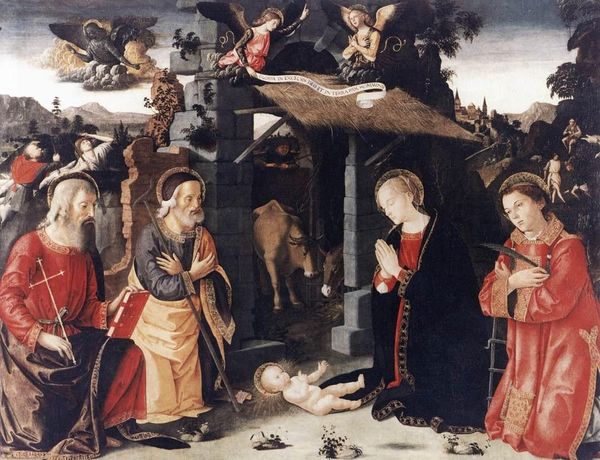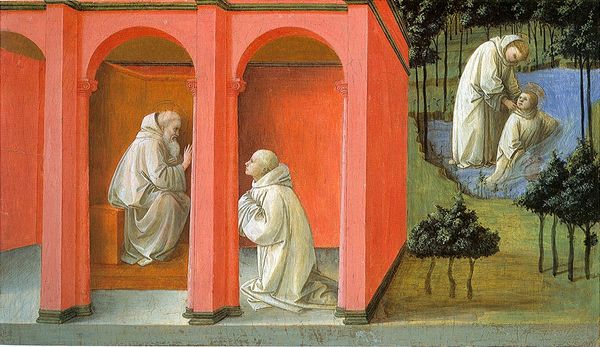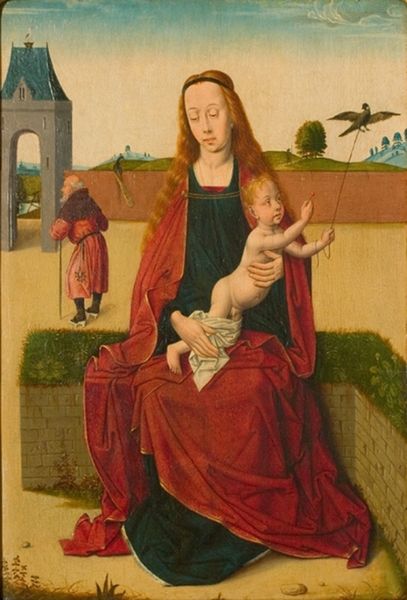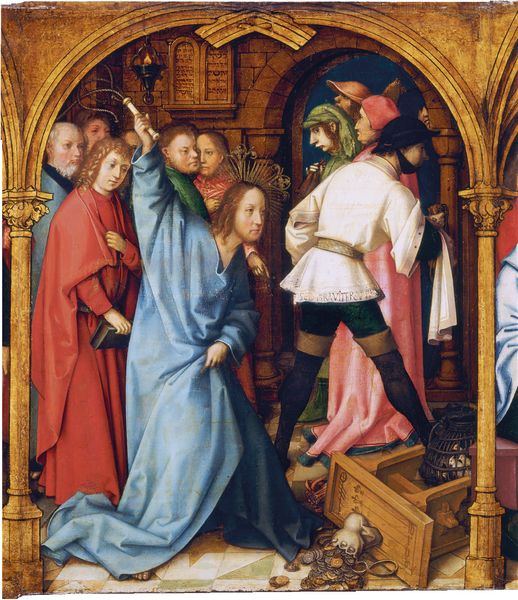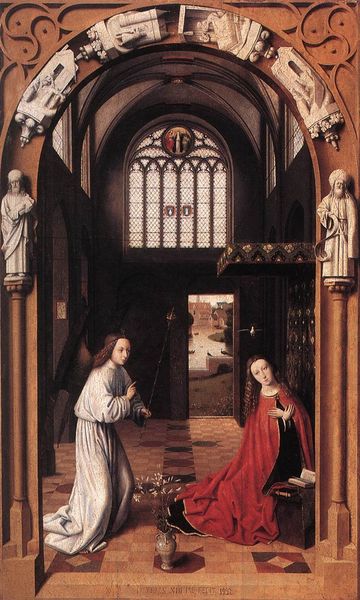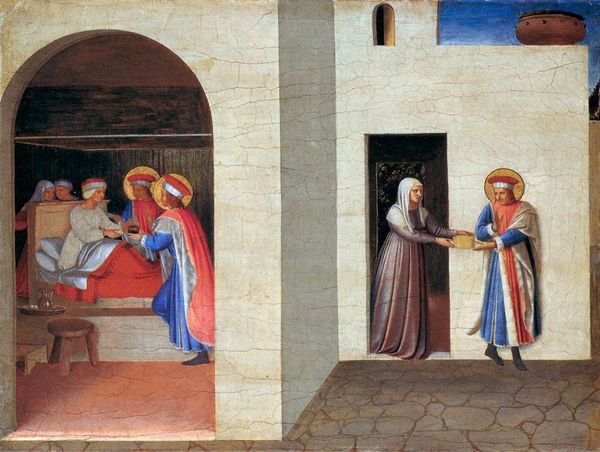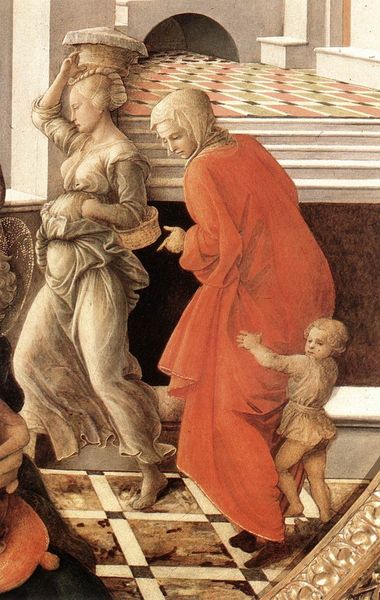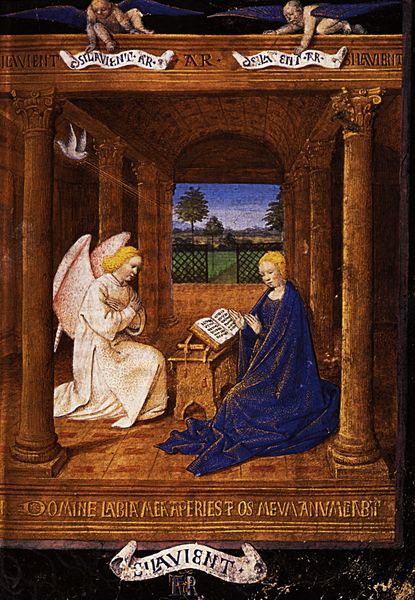
painting, oil-paint
#
narrative-art
#
painting
#
oil-paint
#
figuration
#
history-painting
#
early-renaissance
Dimensions: 29 x 21.5 cm
Copyright: Public domain
Editor: This is Hans Memling's "Nativity," painted around 1470 using oil paint. I'm immediately struck by how the artist uses light; it feels like it's illuminating the central figures in a very deliberate way, almost creating a stage-like setting. What do you see in this piece from a more formal perspective? Curator: A crucial observation. Notice how Memling directs our gaze. The artist employs a strong contrast between light and shadow to highlight the Virgin Mary and the Christ Child. The composition adheres to a pyramidal structure, drawing the eye upward from the infant to Mary, and then outward towards Joseph. Do you see how the angles and lines formed by the architecture in the background create a visual framework, confining and defining the figures? Editor: Yes, I see how the rough brick contrasts with the softness of Mary's features and gown. What about the colors? They seem muted, but still contribute to the overall composition. Curator: Precisely. Memling uses a limited palette, relying on earth tones and subdued blues. This restraint enhances the contemplative mood, typical of the Early Renaissance, where visual clarity was prized above all. Note, too, the flatness of certain planes. It contributes to a sense of artificiality. This calculated spatial arrangement creates a powerful emotional and spiritual dynamic, don't you agree? Editor: That’s fascinating; I never considered the use of space as contributing to the spiritual aspect. Looking closely, the donkey and ox staring at the holy figures gives me a unique viewpoint as an observer to this sacred moment. Thank you. Curator: Indeed. Consider how line, light, and color interplay to evoke a spiritual effect, moving past any need for contextual readings to experience this powerful visual dynamic.
Comments
No comments
Be the first to comment and join the conversation on the ultimate creative platform.
